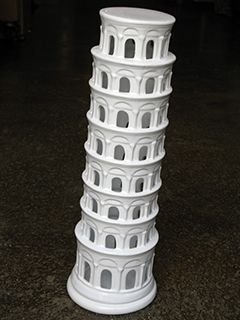Abishai100
VIP Member
- Sep 22, 2013
- 4,959
- 250
- 85
It can be argued that the only way to define an object as a work of art is to suggest that the piece of work represents the artist's intention to make art. If the piece of work was not intended to be a work of art, then it can be a work of graffiti (or slander or vandalism).
Art is not necessarily praise. It can also be an expression of social criticism (i.e., political cartoons of Thomas Nast).
However, if the work of art, be it one of praise (i.e., Degas painting of ballet dancers in gracious postures) or a work of social criticism (i.e., Thomas Nast caricature of political corruption), is intended to be art, we can not say that the creator/artist was making vandalism or meaningless graffiti.
Why then make categories of art (i.e., expressionism, cubism, impressionism, transcendentalism, absurdism, etc.)? After all, if the artist can say, "I intend for this work to be art!" he/she need not assign it stylistic categories.
It seems that art can be dissected into re-presentations of both form (i.e., geometry) and clarity (i.e., psychiatry).
The Leaning Tower of Pisa is a famous Italian monument of architecture that is celebrated for its glorious flaws (not unlike the iconic Venus de Milo sculpture/statue). The Leaning Tower of Pisa has been reproduced into miniature sculptures by various Italian street merchants, artisans, and pottery experts. These Pisa mementos reveal an artistic fascination with form and clarity.
The Leaning Tower of Pisa reveals a philosophical interest in characterizing art as form perception (i.e., regularity of shape) and clarity dialogue (i.e., flaw analysis).
How then can we talk about art in terms of 'self-improvement freeze-frames?' After all, doesn't the artist seek to use art to create expressions of sensitivity?
We have to be careful therefore to proceed with due diligence since talking about an artist's sensitivity quickly invokes ideas about subjective bias. This may comprise the Argumentation Arithmetic of art analysis.

Leaning Tower of Pisa
One Hour Photo (Film)

Art is not necessarily praise. It can also be an expression of social criticism (i.e., political cartoons of Thomas Nast).
However, if the work of art, be it one of praise (i.e., Degas painting of ballet dancers in gracious postures) or a work of social criticism (i.e., Thomas Nast caricature of political corruption), is intended to be art, we can not say that the creator/artist was making vandalism or meaningless graffiti.
Why then make categories of art (i.e., expressionism, cubism, impressionism, transcendentalism, absurdism, etc.)? After all, if the artist can say, "I intend for this work to be art!" he/she need not assign it stylistic categories.
It seems that art can be dissected into re-presentations of both form (i.e., geometry) and clarity (i.e., psychiatry).
The Leaning Tower of Pisa is a famous Italian monument of architecture that is celebrated for its glorious flaws (not unlike the iconic Venus de Milo sculpture/statue). The Leaning Tower of Pisa has been reproduced into miniature sculptures by various Italian street merchants, artisans, and pottery experts. These Pisa mementos reveal an artistic fascination with form and clarity.
The Leaning Tower of Pisa reveals a philosophical interest in characterizing art as form perception (i.e., regularity of shape) and clarity dialogue (i.e., flaw analysis).
How then can we talk about art in terms of 'self-improvement freeze-frames?' After all, doesn't the artist seek to use art to create expressions of sensitivity?
We have to be careful therefore to proceed with due diligence since talking about an artist's sensitivity quickly invokes ideas about subjective bias. This may comprise the Argumentation Arithmetic of art analysis.

Leaning Tower of Pisa
One Hour Photo (Film)
